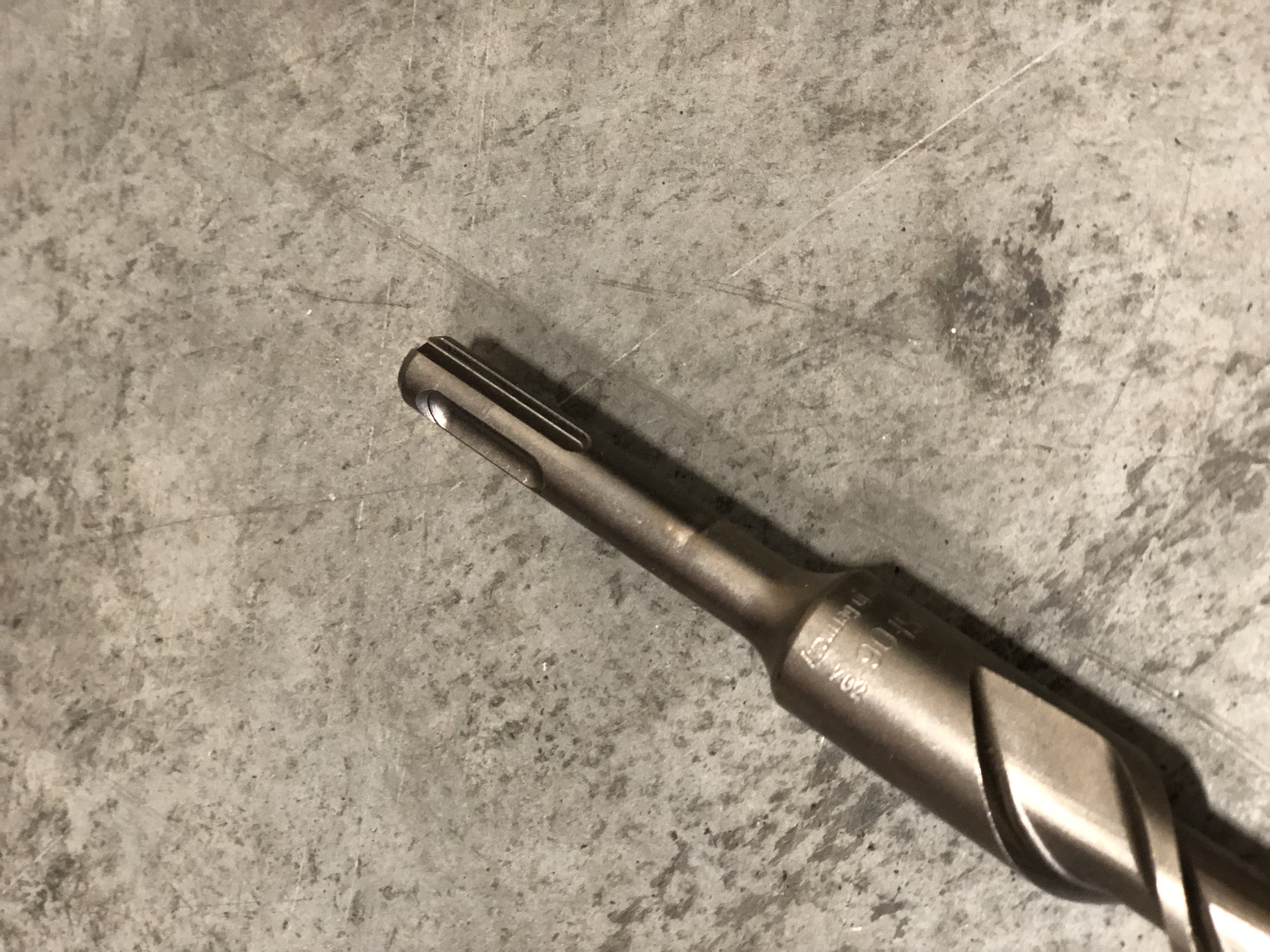By Marcus Kirkwood
How did buying a drill bit get so confusing? Is there a right and wrong? Is there a better or worse? Are all of these ‘improvements’ really even improvements?
There are four main categories in the marketplace, and they all serve a purpose. SDS Max, SDS Plus, Spline, and straight shank bits can be found in almost any hardware store in the world. The question is, which one is right for you for the job at hand.

When you’re looking for a drill, whether it’s SDS Max or SDS Plus, you’ll notice a rating such as 1” or 1 1/8.” This refers to the size of bit the drill is capable of running without losing power. This does NOT mean the size of the shank changes, just that the drill has more or less power for cutting holes or chipping concrete.

SDS Plus
The SDS system is said to have been developed by Hilti and Bosch in Germany in the 1970s. At the time, it was a major advancement in the clamping of drill bits, thus allowing holes to be drilled more efficiently. Please note, SDS Plus bits and drills only pertain to the shank. There are multiple types and sizes of bits with an SDS Plus shank. As seen above, it is a pattern that is consistent with all SDS Plus drill receivers. Most commonly, SDS Plus bits are used for holes drilled in masonry and concrete (carbide bits) up to 1” in diameter. They can often be found over 1,” but most contractors move to a drill with more power when drilling holes larger than that.
SDS Max
If you’re whipping out the big guns to cut bigger holes in masonry or concrete, you’d better have a few SDS Max bits in your toolbox. Industry standard says that any hole over 1” is cut with an SDS Max bit. Of course, there are plenty of bits smaller than 1” that can be run with an SDS Max drill, but it can often be overkill. These do allow for a much longer length as well. You will often see bits as long as 36” or some may even have an extension that allows you to cut well over 4.’
.png)
Spline
Spline bits have become much less common than SDS Plus or SDS Max. They are very similar in capacity and variety to the range available to SDS Max bits. The major difference is that chipping bits and drilling bits that are used for spline drive drills have different shanks as one is smooth and the other has splines.
Dustless
When OSHA released their changes in silica dust standards, power tool manufacturers were quick to adapt. Many were able to develop a hollow bit that’s compatible with both SDS Max and SDS Plus drills. These bits attach directly to a vacuum so all dust is sucked up the core of the bit, allowing for faster and cleaner drilling. Bosch calls their the Speed Clean Bit, but many other drill bit companies have come to market with cheaper options that are compatible with most HEPA vac systems including these options from DrilTec.
Drills: Rotary vs Demo vs Combo
On top of your numerous bit choices, your most common options for drills are the following: rotary hammers, demolition hammers, and combination hammers. We figure it’s worth describing them all in a quick minute. A rotary hammer uses rotation and a hammering action to break up concrete as a bit rotates. A demolition hammer is far more heavy duty and breaks and chips concrete. A combination hammer can drill or break up concrete by flipping a switch. Be aware as many of these options look very similar. Be sure to read up before you buy a bit or drill that suits your needs.
.png&width=880&height=0)

.png)